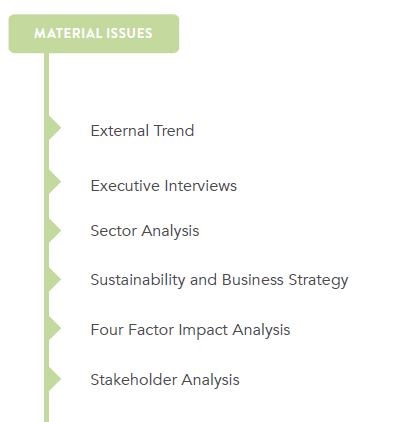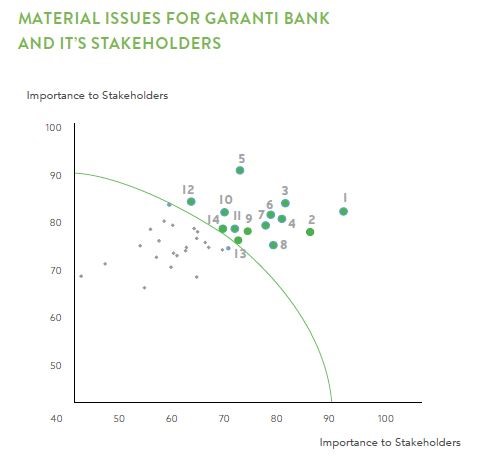Materiality Analysis
We aim to provide a coherent story of our activities. The basis of this story is the materiality analysis which enables us to identify the most relevant and important topics for Garanti BBVA and its stakeholders, the material issues. Material issues are mainly determined based on stakeholder dialogue and are plotted in the materiality matrix. The topics defined within the materiality matrix form the basis of this report, as set out in the ‘About this report’ section.
We performed our first materiality analysis in 2013. As we want to make sure that we are always in line with the needs of our stakeholders and to make sure that the identified material issues are still the most important, we perform an update of our materiality analysis at least once every two years. The last revision was finalized in the first quarter of 2017 and formed the basis for last year’s report. We listened to our internal and external stakeholders and reviewed the connection between our corporate strategy and global trends which impact the banking sector.

We carried out a desk study and reviewed the trends, sectoral reports, reports of global banks, and advice by international professional organizations such as GRI and SASB. After identifying the long list of topics, we conducted a comprehensive stakeholder analysis and outreach by reaching all stakeholder groups via online questionnaires, focus group meetings and phone to gather their opinion. In the external trend analysis, we reviewed the priorities of initiatives which guide the business world and financial sector, such as the Sustainable Development Goals, UN Principles for Responsible Investments, and Global Alliance - for Banking on Values.
In executive interviews, we included the view of top management who are closely involved in determining the Bank’s future strategy. The executives evaluated the topics according to the five-year corporate strategy and topics’ risk and opportunity areas as well as their operational, reputational, strategic, legal and financial impact. In addition to executive interviews we evaluated the topics through a four-step assessment called “Four Factor Impact Analysis”. In the assessment, we ranked each topic according to the magnitude of impact, likelihood of impact and time frame (short, middle, long) in terms of;
- Direct financial impact and risk,
- Legal, regulatory and policy drivers,
- Opportunities for innovation,
- Industry norms, best practices and competitive advantage.
In an integrated governance approach, we finalized the Bank’s material issues considering the alignment of topics with our integrated business strategy. Common topics which are highly important for both external stakeholders as well as our executives constituted the material issues and were clustered under 6 main topics: Customer Experience, Financial Performance, Digital Transformation, Corporate Governance and Risk Management, Investing in Human Capital, Responsible and Sustainable Development.
